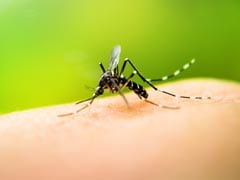Get ears pierced early to avoid keloids
Delaying ear piercing until the pre-teen years or later may increase a person's chances of developing keloids - raised, fibrous scar tissue.
Delaying ear piercing until the pre-teen years or later may increase a person's chances of developing keloids - raised, fibrous scar tissue.
Among a small group of patients with keloids that developed after ear piercing, the majority had their ears pierced at age 11 or older.
One can get a keloid at any age, however, it seems to be much less common (among those who get their ears pierced) in early childhood compared to after age 11. Further, if the parents have keloids, their child is probably at a greater risk of getting one.
Keloids are produced by uncontrolled proliferation of fibrous tissue after injury to any area of the skin, including the ear, scalp, top of the foot and the chest. The exact cause and mechanism of keloid formation is unknown, but keloids are known to be more common among blacks than among other ethnic groups.
Researchers from the Medical College of Georgia did a study based on surveys of 27 female and 5 male patients who developed keloids after having their ears pierced. Most (27) of the study participants were black and their average age was 24 years. Over half (56 percent) of the group had a family member, commonly mothers, who had also developed keloids. Sixteen (50 percent) of the study participants developed a keloid after their first piercing, and 20 study participants developed a keloid after subsequent piercings, the researchers report in this month's issue of Pediatrics. Those whose ears were pierced at 11 years of age or older were more likely to develop keloids those whose ears were pierced at younger ages.
Among those with a family history of keloids, nearly 86 percent of those whose first piercing occurred at 11 years old or older developed keloids, in comparison to 27 percent of those who had their first piercing before they reached 11 years of age.
Various treatments exist for keloids, ranging from corticosteroid ointments to surgery. However, keloids often reappear after they are surgically removed and the recurrent keloids are usually larger than the original, the report indicates.
Given the difficulty and cost of treating keloids, prevention remains the best approach. These observations suggest that parents from keloid-prone families should consider having their children's ears pierced in infancy or early childhood or perhaps not at all.
Pediatrics,
May 2005
DoctorNDTV is the one stop site for all your health needs providing the most credible health information,
health news and tips with expert advice on healthy living, diet plans, informative videos etc. You can get the most relevant and accurate info you need about health problems like
diabetes,
cancer,
pregnancy,
HIV and AIDS,
weight loss and many other lifestyle diseases. We have a panel of over 350 experts who help us develop content by giving their valuable inputs and bringing to us the latest in the world of healthcare.
Was this Article Helpful
Yes or
No













